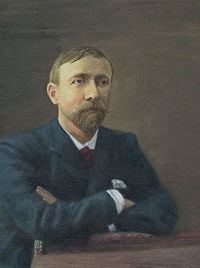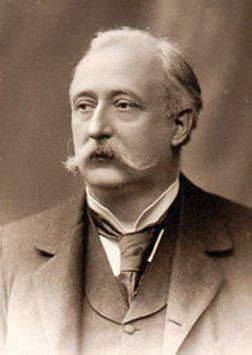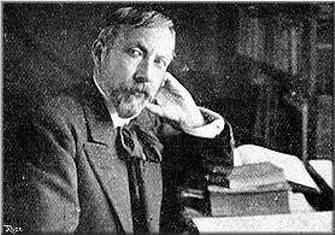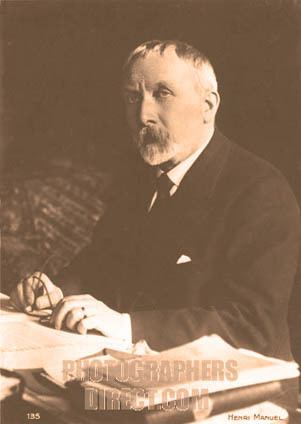Name Gabriel Pierne Role Composer | Education Conservatoire de Paris | |
 | ||
Compositions Cydalise et le Chevre-pied, Cydalise et le Chevre-pied, Prelude - op 29 no 1, Prelude - op 29 no 1, Etude de concert - op 13, Etude de concert - op 13, Konzertstuck - op 39, Konzertstuck - op 39, Trois pieces formant suite de concert - op 50: III Etude symphonique, Trois pieces formant suite de concert - op 50: III Etude symphonique, Solo de concert - op 35, Solo de concert - op 35, Prelude de concert - op 53, Prelude de concert - op 53, Piano Concerto in C minor - op 12: I Allegro, Piano Concerto in C minor - op 12: I Allegro, Poeme symphonique in D minor - op 37, Poeme symphonique in D minor - op 37, Piano Concerto in C minor - op 12: III Final, Piano Concerto in C minor - op 12: III Final, Cantilene - op 29 no 2, Cantilene - op 29 no 2, Impromptu-caprice - op 9, Impromptu-caprice - op 9, Piano Concerto in C minor - op 12: II Scherzando, Piano Concerto in C minor - op 12: II Scherzando, Fantaisie-Ballet in B-flat major - op 6, Fantaisie-Ballet in B-flat major - op 6, Sonate - op 36: III Andante non troppo - Allegro un poco agitato, Sonate - op 36: III Andante non troppo - Allegro un poco agitato, Scherzo-Caprice in D major - op 25, Scherzo-Caprice in D major - op 25, Sonate - op 36: I Allegretto, Sonate - op 36: I Allegretto, Trois pieces formant suite de concert - op 50: I Preludio e fughetta, Trois pieces formant suite de concert - op 50: I Preludio e fughetta, Sonate - op 36: II Allegretto tranquillo, Sonate - op 36: II Allegretto tranquillo, Variations en ut mineur - op 42, Variations en ut mineur - op 42, Serenade, Serenade, Trois pieces formant suite de concert - op 50: II Nocturne en forme de valse, Trois pieces formant suite de concert - op 50: II Nocturne en forme de valse, Introduction et Variations sur une Ronde Populaire, Introduction et Variations sur une Ronde Populaire, Scherzando - op 29 no 3, Scherzando - op 29 no 3, Passacaille - op 52, Passacaille - op 52, Canzonetta - op 19, Canzonetta - op 19, Suite de Valses et Cortege-Blues - op 49 bis: Viennoise, Suite de Valses et Cortege-Blues - op 49 bis: Viennoise Similar People Lily Laskine, Laurent Wagschal, Jean Martinon, Ronald Corp, Yolanda Kondonassis | ||
French composer gabriel pierne s canzonetta op 19
Henri Constant Gabriel Pierné (16 August 1863 – 17 July 1937) was a French composer, conductor, and organist.
Contents
- French composer gabriel pierne s canzonetta op 19
- Gabriel pierne s ramuntcho conducted by the composer
- Biography
- Music
- Honours
- Orchestral works
- Works for band
- Operas
- Ballets
- Music for theatre
- Piano works
- Solo works
- Gabriel piern
- References
Gabriel pierne s ramuntcho conducted by the composer
Biography

Gabriel Pierné was born in Metz in 1863. His family moved to Paris after Metz and the rest of Lorraine were annexed to Germany in 1871 following the Franco-Prussian War. He studied at the Paris Conservatoire, gaining first prizes for solfège, piano, organ, counterpoint and fugue. He won the French Prix de Rome in 1882, with his cantata Edith. His teachers included Antoine François Marmontel, Albert Lavignac, Émile Durand, César Franck (for the organ) and Jules Massenet (for composition).

He succeeded César Franck as organist at Sainte-Clotilde Basilica in Paris from 1890 to 1898. He himself was succeeded by another distinguished Franck pupil, Charles Tournemire. Associated for many years with Édouard Colonne's concert series, the Concerts Colonne, from 1903, Pierné became chief conductor of this series in 1910.

His most notable early performance was the world premiere of Igor Stravinsky's ballet The Firebird, at the Ballets Russes, Paris, on 25 June 1910. He remained in the post until 1933 (when Paul Paray took over his duties).

He made a few electrical recordings for Odeon Records, from 1928 to 1934, conducting the L'Orchestre Colonne, including a 1929 performance of his Ramuntcho and a 1931 performance of excerpts from his ballet Cydalise et le Chevre-pied.
He died in Ploujean, Finistère, in 1937.
Music
Pierné wrote several operas and choral and symphonic pieces, as well as a good deal of chamber music. His most famous composition is probably the oratorio La Croisade des Enfants based on the book by Marcel Schwob. Also notable are such shorter works as his March of the Little Lead Soldiers, which once enjoyed substantial popularity (not only in France) as an encore; the comparably popular Marche des petits Faunes is from his ballet Cydalise et le Chèvre-pied. His chamber work, Introduction et variations sur une ronde populaire, for saxophone quartet is a standard in saxophone quartet repertoire.
His discovery and promotion of the work of Ernest Fanelli in 1912 led to a controversy over the origins of impressionist music.
Honours
He became a member of the Academie des Beaux Arts in 1925. He was made a Commandeur de la Légion d'Honneur in 1935. His tomb at Père Lachaise Cemetery has a headstone designed by sculptor Henri Bouchard.
Gabriel Pierné Square in Paris is named for him.
